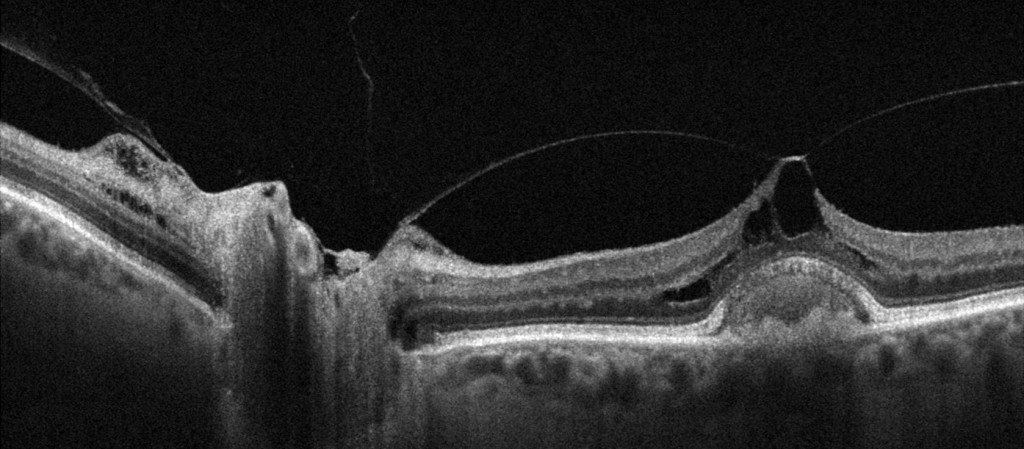
The inside of the eye is filled with a gel called the vitreous. This is like the raw white of an egg in consistency. In children and young adults, the vitreous is like the white of a freshly laid egg; it is firm, perfectly transparent and is in contact with the retina, filling the whole of the eye.
With age, the vitreous becomes like the white of an older egg; it is watery and can shrink, pulling away from the retina. This is called a posterior vitreous detachment (PVD) and can occur suddenly without warning. Symptoms of PVD include the sudden onset of new floaters and flashes of light, even in a darkened room.
In most people the PVD causes no harm; it has occurred in about 1/2 of people aged 60 and ⅔ of people aged 70. In some people, however, the vitreous can tug on the retina (causing flashing lights), and/or tear the retina (causing a sudden onset of floaters). This is more likely to happen if you are short sighted or have had previous eye surgery. It is extremely unlikely than any activity on your part will have caused this to happen.
you cannot tell from symptoms alone whether you have had a harmless posterior vitreous detachment or a retinal tear that may go on to cause a retinal detachment
Why Should I Have My Eye Examined?
If the vitreous is abnormally strongly attached to the retina, this pulling may tear the retina, which can lead to a retinal detachment, the symptoms are the same. That is, you cannot tell from symptoms alone whether you have had a harmless posterior vitreous detachment or a retinal tear that may go on to cause a retinal detachment; it is vital you are seen if you develop any new flashes, new floaters or a shadow in your peripheral vision.
Half of the people who develop a retinal tear, with flashing lights or floaters, may go on to develop a retinal detachment.
Will I Need To Be Seen Again?
The posterior vitreous detachment may take 6 to 8 weeks to complete. Dr Chauhan generally does not suggest a review unless he is particularly concerned; he usually tells patients literally 5 times about the symptoms to look out for and the importance of being seen on the same day or the next morning at the latest.
These symptoms are…
new or increased floaters
OR
new or increased flashes
OR
a shadow in your peripheral vision
Will My Flashes And Floaters Go Away?
It is expected that the symptoms you experienced at the onset of the posterior vitreous detachment will gradually lessen.
However, the floaters are condensations of the vitreous and do not disappear – in most people they either drift out of view for much of the time or people become used to them.
This may take a number of weeks or even months; while surgery can be performed to remove floaters, it is best not even to consider this for at least six months and, even then, the risks generally outweigh any benefits.
Importantly, if the floaters and flashes do not increase or change for the worse, those that you have are not causing any harm.



